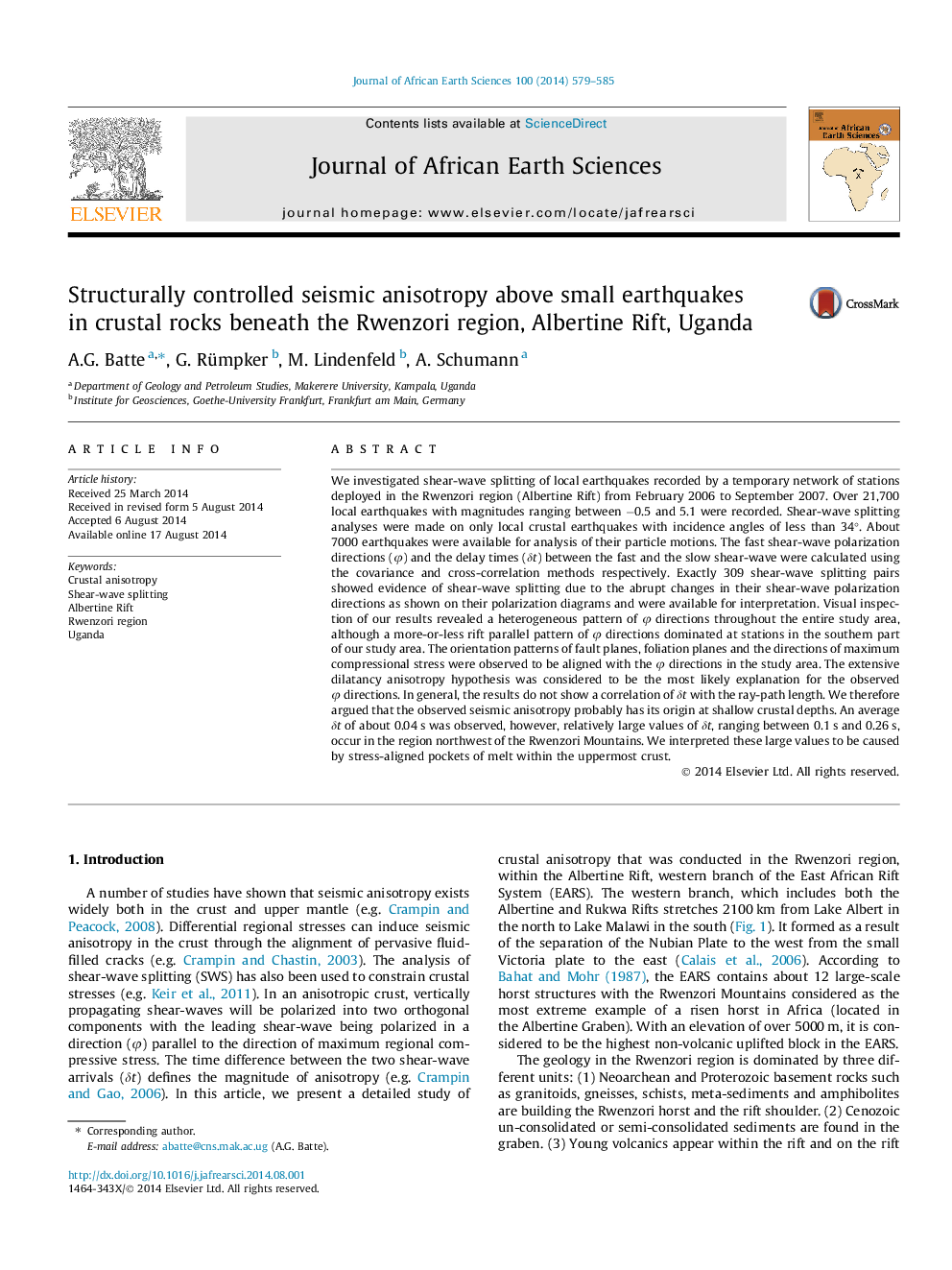| کد مقاله | کد نشریه | سال انتشار | مقاله انگلیسی | نسخه تمام متن |
|---|---|---|---|---|
| 6443802 | 1640207 | 2014 | 7 صفحه PDF | دانلود رایگان |
عنوان انگلیسی مقاله ISI
Structurally controlled seismic anisotropy above small earthquakes in crustal rocks beneath the Rwenzori region, Albertine Rift, Uganda
دانلود مقاله + سفارش ترجمه
دانلود مقاله ISI انگلیسی
رایگان برای ایرانیان
کلمات کلیدی
موضوعات مرتبط
مهندسی و علوم پایه
علوم زمین و سیارات
زمین شناسی
پیش نمایش صفحه اول مقاله

چکیده انگلیسی
We investigated shear-wave splitting of local earthquakes recorded by a temporary network of stations deployed in the Rwenzori region (Albertine Rift) from February 2006 to September 2007. Over 21,700 local earthquakes with magnitudes ranging between â0.5 and 5.1 were recorded. Shear-wave splitting analyses were made on only local crustal earthquakes with incidence angles of less than 34°. About 7000 earthquakes were available for analysis of their particle motions. The fast shear-wave polarization directions (Ï) and the delay times (δt) between the fast and the slow shear-wave were calculated using the covariance and cross-correlation methods respectively. Exactly 309 shear-wave splitting pairs showed evidence of shear-wave splitting due to the abrupt changes in their shear-wave polarization directions as shown on their polarization diagrams and were available for interpretation. Visual inspection of our results revealed a heterogeneous pattern of Ï directions throughout the entire study area, although a more-or-less rift parallel pattern of Ï directions dominated at stations in the southern part of our study area. The orientation patterns of fault planes, foliation planes and the directions of maximum compressional stress were observed to be aligned with the Ï directions in the study area. The extensive dilatancy anisotropy hypothesis was considered to be the most likely explanation for the observed Ï directions. In general, the results do not show a correlation of δt with the ray-path length. We therefore argued that the observed seismic anisotropy probably has its origin at shallow crustal depths. An average δt of about 0.04 s was observed, however, relatively large values of δt, ranging between 0.1 s and 0.26 s, occur in the region northwest of the Rwenzori Mountains. We interpreted these large values to be caused by stress-aligned pockets of melt within the uppermost crust.
ناشر
Database: Elsevier - ScienceDirect (ساینس دایرکت)
Journal: Journal of African Earth Sciences - Volume 100, December 2014, Pages 579-585
Journal: Journal of African Earth Sciences - Volume 100, December 2014, Pages 579-585
نویسندگان
A.G. Batte, G. Rümpker, M. Lindenfeld, A. Schumann,